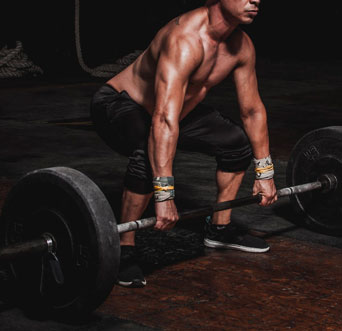Olympic lifting, also known as weightlifting, is an exhilarating and technically demanding sport that has been part of the Olympic Games since their inception in 1896.
This discipline showcases two primary lifts: the snatch and the clean and jerk. In this article, we will delve into the world of Olympic lifting, exploring its history, benefits, and what it takes to become a successful Olympic lifter.
The Origins of Olympic Lifting
The roots of Olympic lifting can be traced back to ancient Greece, where lifting heavy stones and other objects was a celebrated athletic feat.
However, it wasn’t until the late 19th century that weightlifting competitions began to take shape, eventually finding a permanent home in the modern Olympic Games.
The Two Lifts: Snatch and Clean and Jerk
- The Snatch: The snatch is a lift where the lifter raises the barbell from the ground to overhead in one swift motion. It requires explosive power, speed, and impeccable technique. The lifter must catch the bar in a deep squat position, displaying flexibility and balance.
- The Clean and Jerk: This lift involves two phases. First, the lifter “cleans” the barbell from the ground to the shoulders. Then, in the “jerk” phase, they propel it overhead, locking out their arms to complete the lift. The clean and jerk emphasizes strength and precision.
The Benefits of Olympic Lifting
- Full-Body Strength: Olympic lifting engages multiple muscle groups, promoting a well-rounded and functional strength. It targets the legs, back, shoulders, and core.
- Explosive Power: The rapid, explosive movements required in Olympic lifting develop tremendous power that can benefit athletes in various sports.
- Enhanced Athletic Performance: Olympic lifting improves speed, coordination, and agility, making it a valuable addition to the training regimens of athletes from different disciplines.
- Mental Toughness: Olympic lifting is as much a mental challenge as a physical one. Lifters must focus intensely to execute perfect technique under pressure.
Getting Started with Olympic Lifting
- Seek Proper Coaching: Olympic lifting demands precise technique. Invest in a qualified coach who can teach you the fundamentals and provide guidance throughout your journey.
- Technique First: Spend ample time practicing the lifts with light weights to master proper form. Perfecting your technique is essential before adding significant weight.
- Develop Mobility: Olympic lifters need good mobility and flexibility. Incorporate mobility exercises and stretches into your training routine.
- Progressive Training: Gradually increase the weight you lift, focusing on building strength and improving your lifts over time.
Competing in Olympic Lifting
Competing in Olympic lifting can be a thrilling experience. There are various levels of competition, from local events to international championships.
It’s a chance to test your skills, measure your progress, and connect with a passionate community of lifters.
Conclusion
Olympic lifting is not just a sport; it’s an art form that requires a unique blend of strength, speed, and precision.
Whether you aspire to become a competitive lifter or simply want to enjoy the physical and mental benefits of this discipline, Olympic lifting offers a challenging and rewarding path.
So, take the plunge, find a coach, and embark on your journey into the world of Olympic lifting – where strength and grace combine to create something truly remarkable.




